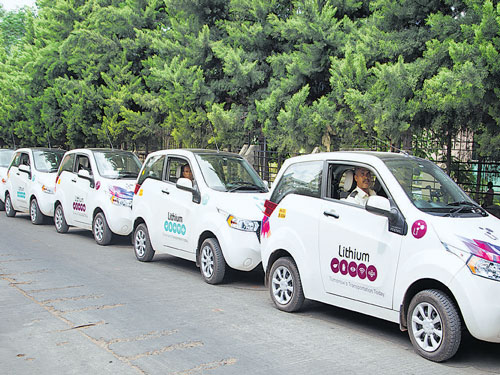This is an abstract from a presentation Ashwin Mahesh, Director, Lithium Urban Technologies, made at the EcoHour webinar of the Responsible Cities Foundation. For a fuller understanding visit https://www.youtube.com/watch?v=XlzreorLl0c
India has the challenge of having to turn all cars and two-wheelers into electric vehicles by 2030. Policy is in place, there is a great deal of talk in the media and in industry forums. On the ground there is little happening. All of 2000 cars and 4000 two-wheelers were sold in the last year. China powered its way to a point where they have today 3.5 lakh cars, 21 million two-wheelers… even the number of electric buses they have is 100,000 – bigger than the total bus market in India.
Headlines in the web world and in the print media [EV frenzy is set to bulldoze India’s auto industry; auto parts makers’ days are numbered] show barely concealed excitement at the prospect of sweeping changes that are on the cards though no one has a clue on how it can happen in the impossibly short time before us to 2030 and the decade after.
So what is the scenario emerging? If you step back from it all, you will see that the automobile industry is at a very major defining moment, a ‘species moment’ across the world, not just India. The shift from the 100-year-old IC engines and our dependence on oil to run our cars and two-wheelers is set to change so dramatically that it is hard to outline the shape of things to come.
But then, as I see it, we needn’t be clear of what actually would have been realised as things go, by 2030 or even 2040. We should know where to look and piece together a picture on a good understanding of the precepts and of the key drivers.
It is hard to imagine for any of us how the new world of electric vehicles will massively transform the landscape for all types of vehicles. There will be no petrol pumps; there will be cars that will perhaps run a 1000 km with batteries that ‘fast-charge’ while changing the way energy is stored and used by vehicles; cars will cost much less with batteries which will be the new fuel being hired monthly and not bought…
Today’s scenario doesn’t suggest at all that such a change is but a few years away from here. Electric cars have limited range and right now there isn’t even the semblance of an ecosystem for charging stations in the country.
The Tesla Model S has a range of around 335 km with a 60 kWh battery. Nissan’s Leaf electric car has a range of 172 km with a 30 kWh battery. France has launched a reasonably ambitious project to retrofit existing IC engines with electric models at costs that are subsidised now but will become market-viable in short years.
In India, Mahindra’s e2o car has a range of 120 km and the car takes about five hours for a charge on normal mode.
Charging Woes
Charging times for these cars will be crucial operations and right now India simply does not have enough charging stations. Mahindra right now only has around 250 charging points. There’s also PlugInIndia, which runs a number of community-charging stations, but has a mere 218 stations.
Cab-hailing companies will have to invest in a number of charging stations — and in the right locations — to handle more than a million electric cars. Such companies across India — and the numbers of the companies and the cars are growing fast — have to perhaps look at a tie-up with NTPC which is looking at charging stations to help create the demand for electricity generated by its plants.
If the range is limited range and charging points are not in the large numbers we need, electric cars will not have the same freedom of mobility as petrol and diesel cars. In such a scenario buyers cannot be challenged on travel along certain routes. You cannot have cars run out of electricity in the middle of a ride! This will mean having to make sure there is a spare battery carried to complete the trip. Remember charging times may take up to five hours, unless there are fast-chargers that do the job in, say 5-10 minutes.
This leads to the larger fret on the quality of power supply needed at such stations, and the sharp surge in demand for such electricity that may turn the balance on the energy generation scenario in the country.
Regulation
The other serious challenge is regulation. Even issue of permits for taxis has run into trouble with transport authorities. Financing the purchase of cars and two-wheelers has long been a bug bear for EV makers because of the very odd challenge of EVs not needing registration and financing companies not therefore having the security of hypothecation of such vehicles that come up for financing.
Like in many other areas of industry and business in the world today, there are no precedents from the past for these solutions that we need into this tumultuous future before us. But there are lessons to be learnt from China and the US on what they have managed to do since about 2008 to turn the table and redefine electric mobility.










